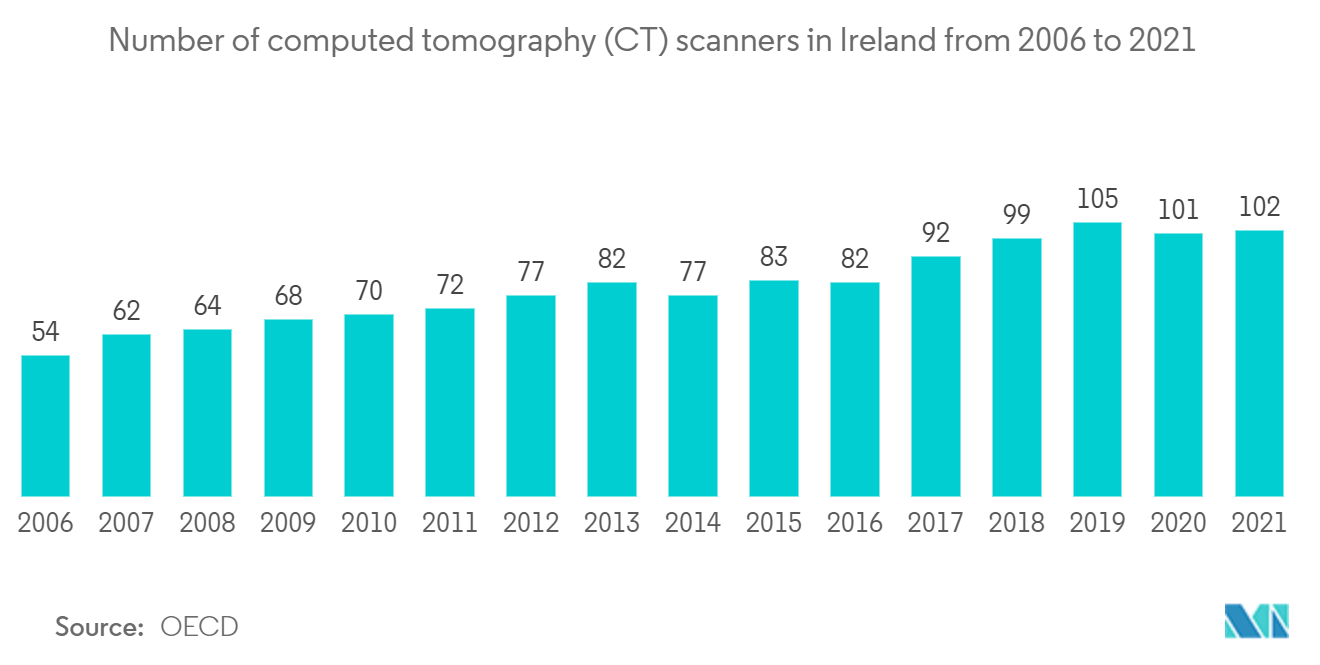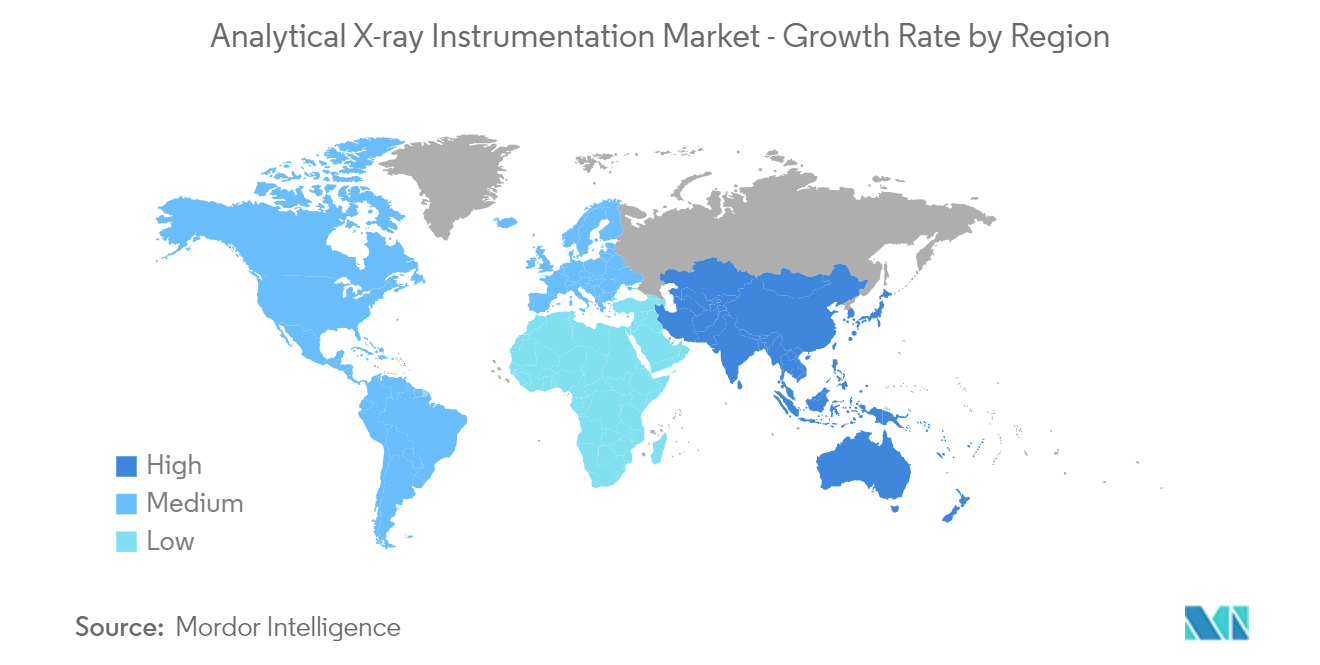Market Trends of Analytical X-ray Instrumentation Industry
This section covers the major market trends shaping the Analytical X-ray Instrumentation Market according to our research experts:
Healthcare Segment is Expected to Hold Significant Share
- In the medical sector, dental applications that require smaller and shorter scans are found to be using stationary X-ray tubes for imaging. According to the Listerine Professional, oral conditions are the most faced health issues affecting 3.9 billion people on average globally. Therefore, in the dental sector, the primary demand for X-ray imaging, which does not require rotating anode X-ray tubes, is due to stationary tubes that are suitable for imaging purposes.
- The cases of breast cancer are high globally. For instance, the American Cancer Society's estimates for breast cancer in the United States for 2022 reported that about 287,850 new cases of invasive breast cancer would be diagnosed in women. Around 51,400 new cases of ductal carcinoma in situ (DCIS) would be diagnosed, and about 43,250 women are expected to die from breast cancer. This rise in breast cancer incidences has resulted in increased demand for diagnosing them, giving a push to the adoption of mammography.
- In high-resolution devices used in general X-ray applications, such as mammography, angiography, and computed tomography (CT), rotating anode X-ray tubes are used. Thus, in the medical sector, therapy applications for various diseases demand the use of rotating anode X-ray tubes. However, the beam has to be safely focused to avoid the ill effects of extra X-rays on the patient.
- Computed tomography (CT) is where a volume dataset of an object is reconstructed from a series of X-ray images taken from various angles around an object. It is best known for its use in medicine for patient diagnosis and aerospace and electronics for non-destructive testing, evaluating defects and inner structure, and verifying product dimensions. These industries require inspection resolutions down to the nanometer scale. As the miniaturization of electronic devices has become predominant, there has been an increasing requirement for CT measurements at 5 µm resolution or less.
- The spot size of the X-ray tube affects the measurement resolution directly. But there are no internationally accepted measurement methods or standards for X-ray tube spot sizes below 5 µm. X-ray equipment manufacturers apply proprietary measurement methods leading to inconsistent results. Therefore, new approaches based on traceably characterized gauges for determining the spot size, position, and shape are being developed and will be introduced as an internationally recognized standard for these spot measurements.
- In May 2022, the EMPIR project Measurement of the focal spot size of X-ray tubes with spot sizes down to 100 nm (NanoXSpot, 18NRM07) was developing new standard practices for characterizing X-ray focal spots to a higher level of accuracy than achieved currently. The project would strengthen the competitiveness of European X-ray system manufacturers. It is expected to benefit many industries that require analyzing nano- and microstructures with metrological CT systems, including pharma-biotech, semiconductors, aviation, and automotive industries.
- Moreover, the growing demand for CT scanners in developing countries is expected to drive demand for analytical X-ray systems. For instance, according to OECD in Ireland, the usage of CT scanners rose to 102 in 2021 compared to 99 in 2018.

North America is expected to hold Significant Market Share
- The United States is witnessing an increase in the geriatric population as well as a surge in the incidence of chronic diseases because of sedentary lifestyles and unhealthy eating habits. According to census data, as of July 2021, 16.5% of the US population of 328 million people, i.e., 54 million, were over the age of 65. It is projected that by 2030, the number will increase to 74 million. The number of people over 85 years of age is growing even faster. Moreover, rising medical infrastructure developments with the increase in medical facilities are expected to propel the demand for the medical X-ray tube market in America.
- According to the National Cancer Institute, in 2018, an estimated 1,735,350 new cases of cancer were diagnosed in the United States. Furthermore, the institute forecasts that per year, the number of new cases of cancer is 439.2 per 100,000 men and women. It also predicts that the number of new cancer cases per year is expected to rise to 23.6 million by 2030 in the United States. The rise in cancer incidences resulted in the increased demand for diagnosing them, giving a push to the adoption of mammography.
- For instance, EOS imaging, a global medical device company, installed its fourth EOS system at the Hospital for Special Surgery (HSS) in New York City, United States, which offers a low dose full-body, stereo-radiographic images of a patient in a functional position.
- Companies such as Samsung Electronics, Cannon, and Fujifilm Medical Systems USA, are strategically investing in producing new X-ray systems, which use X-ray detectors and X-ray tubes, and produced its mobile X-ray systems, which use X-ray detectors. The increase in the production of these systems is anticipated to increase the use of analytical X-ray systems.
- In March 2022, Richardson Electronics Ltd, a global provider of engineered solutions for diagnostic imaging equipment, announced the issuance of US Patent No. 11,257,652, which was the result of the company's innovative healthcare solutions to replace X-ray tube components. Richardson's newly-patented solution offers a unique conductive coating for the X-ray tube insulator. The insulator is easier to manufacture, increases recyclability, and prevents component failure. The coating is able to be advantageously applied at a comparatively low temperature that does not negatively impact sensitive parts of the insulator. This solution also reduces waste, as the coating can be reapplied several times to the ceramic components.


